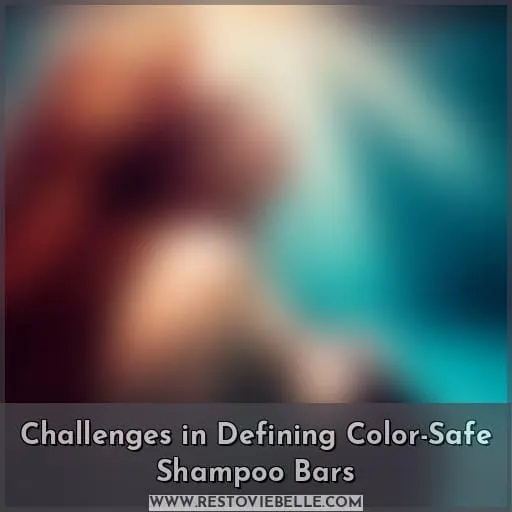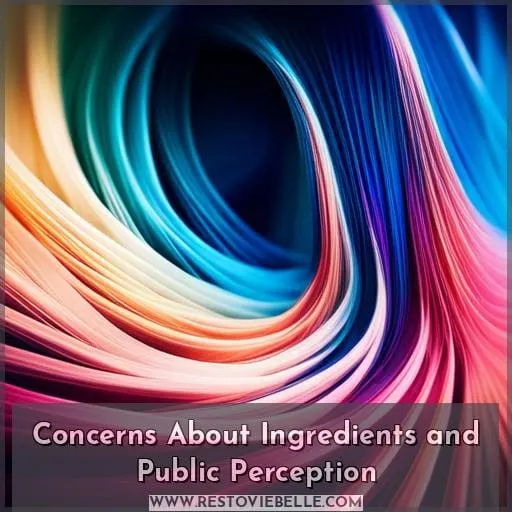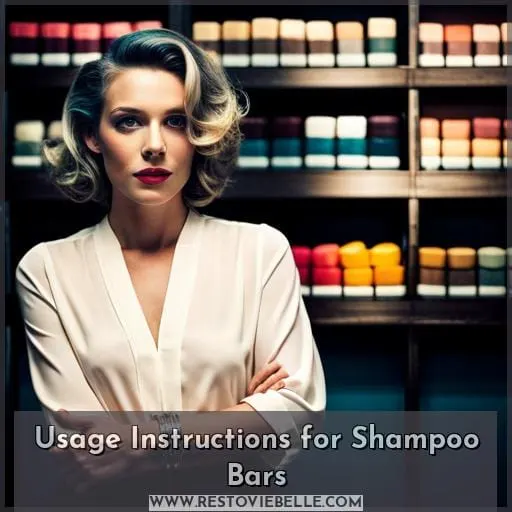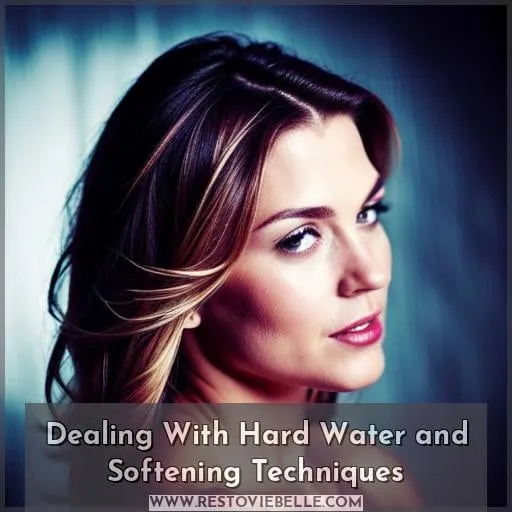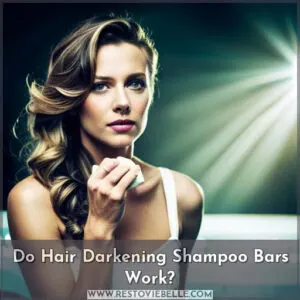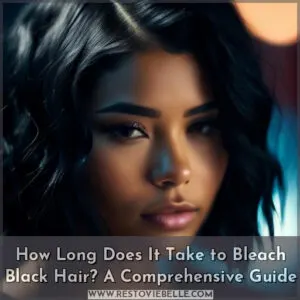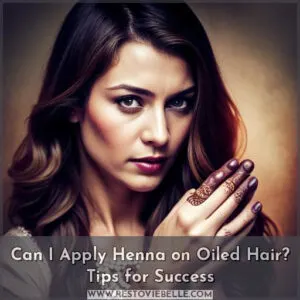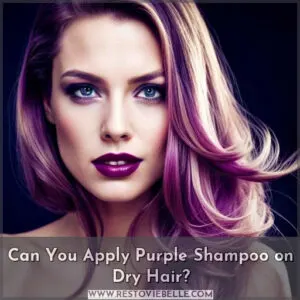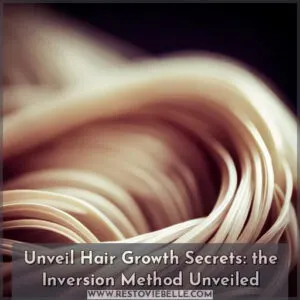This site is supported by our readers. We may earn a commission, at no cost to you, if you purchase through links.
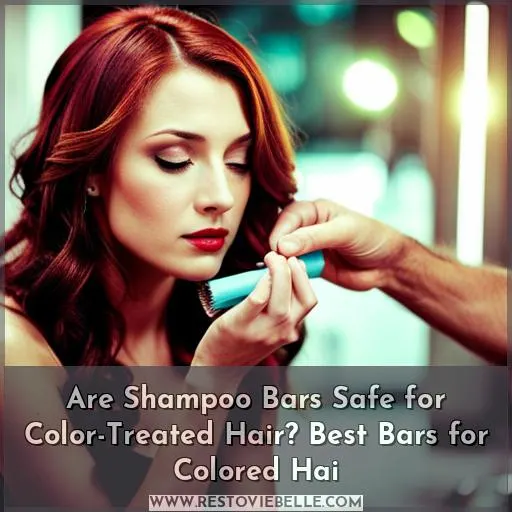 Step into the world of shampoo bars and discover the best options for your color-treated hair. Are you wondering if these bars are safe? Well, fret not! We’ve got all the answers you need. In this article, we’ll delve into the ingredients, challenges, and concerns surrounding shampoo bars for colored hair.
Step into the world of shampoo bars and discover the best options for your color-treated hair. Are you wondering if these bars are safe? Well, fret not! We’ve got all the answers you need. In this article, we’ll delve into the ingredients, challenges, and concerns surrounding shampoo bars for colored hair.
Plus, we’ll provide tips on usage instructions and alternative options to ensure your locks stay vibrant and healthy.
Table Of Contents
- Key Takeaways
- Are Shampoo Bars Safe for Color-Treated Hair?
- Challenges in Defining Color-Safe Shampoo Bars
- Concerns About Ingredients and Public Perception
- Seeking Alternatives and Ingredient Accessibility
- Usage Instructions for Shampoo Bars
- Dealing With Hard Water and Softening Techniques
- Frequently Asked Questions (FAQs)
- Conclusion
Key Takeaways
- Shampoo bars like Kitsch Nourishing Conditioner Bar and JRLIGGETT’S Shampoo Bar are safe for color-treated hair as they moisturize without stripping color and retain hair color, respectively.
- While shampoo bars like Odacité Shampoo Bar Argan Coconut and Davines LOVE Shampoo Bar can be moisturizing and volumizing, they may have limited availability and may leave hair greasy or crumble with use.
- The Ethique Curl Defining Shampoo Bar is specifically formulated for curly hair, but it may not be effective for certain hair types and can cause shrinkage for some.
- When using shampoo bars on color-treated hair, it is important to consider factors such as the ingredients’ effects on henna-treated hair, the pH impact of surfactants like Coco Glucoside on permanent dye, and the potential for product build-up and tangles.
Are Shampoo Bars Safe for Color-Treated Hair?
When it comes to color-treated hair, the safety of shampoo bars can be a concern. However, there are several shampoo bar options that are specifically formulated for colored hair and considered safe to use.
Some recommended options include:
- Kitsch Nourishing Conditioner Bar
- Odacité Shampoo Bar Argan Coconut
- Ethique Curl Defining Shampoo Bar
- Davines LOVE Shampoo Bar
- JRLIGGETT’S Shampoo Bar
These bars offer effective cleansing while maintaining the vibrancy of your colored hair.
Kitsch Nourishing Conditioner Bar
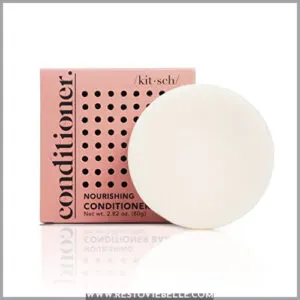
You can trust the Kitsch Nourishing Conditioner Bar to be safe and effective for color-treated hair. Formulated without sulfates or parabens, this bar conditions with natural oils like coconut and sunflower seeds to hydrate dry, damaged strands.
The moisturizing formula balances pH for healthy-looking, silky hair and keeps color vibrant.
- Moisturizing for dry, color-treated hair
- Cleans without stripping color
- Natural oils nourish hair
- Zero-waste packaging
- Limited availability
- May not completely eliminate need for leave-in conditioner
- Scent varies between batches
Odacité Shampoo Bar Argan Coconut
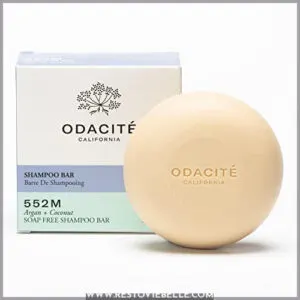
You’ll find the Odacité Shampoo Bar Argan Coconut offers a sustainable, salon-quality cleansing experience that’s safe for color-treated hair.
Powered by argan and castor oils, this shampoo bar cleanses, purifies, and nourishes all hair types without contributing to plastic pollution. The handcrafted bar contains coconut oil to gently cleanse the scalp while sealing in moisture with cupuaçu butter.
Easy to use and ideal for thin, thick, straight, curly, or color-treated hair alike.
- Moisturizing and volumizing
- Soft, creamy lather
- Compact and travel-friendly
- Texture may seem unusual
- Limited availability
- Contains titanium dioxide
Ethique Curl Defining Shampoo Bar
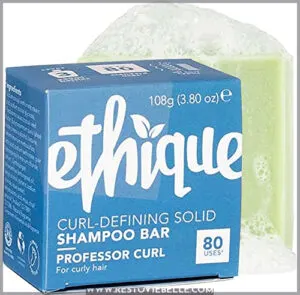
The Ethique Curl Defining Shampoo Bar’s formula targets curly, coily, and wavy hair types with moisture-locking and frizz-fighting ingredients like shea butter and cocoa butter. Specifically created for thick, coarse, dry curls needing extra nourishment, this plastic-free bar harnesses certified organic ingredients to hydrate hair, define curls, and control frizz without silicones, sulfates, or palm oil.
- Formulated for curly hair‘s unique needs
- Deeply moisturizing
- Defines curls and reduces frizz
- Can cause shrinkage for some
- Not as effective on certain hair types
- Could still be drying for extremely coarse hair
Davines LOVE Shampoo Bar
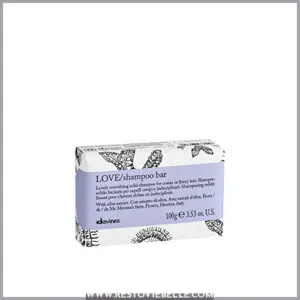
If you have color-treated hair and are considering using a shampoo bar, the Davines LOVE Shampoo Bar is worth considering. Formulated to address frizzy hair, this luxury solid shampoo bar comes in a compact, eco-friendly form and provides a refreshing lavender scent.
Users praise its ability to soften curls, reach neglected scalp areas, and remove residue after dry shampoo use for clean, conditioned locks. However, some users report issues like crumbling, greasy hair, and an unpleasant smell.
- Softens curls and ends
- Targets scalp buildup
- Plastic-free packaging
- Can crumble with use
- May leave hair greasy
- Scent isn’t always pleasant
JRLIGGETT’S Shampoo Bar
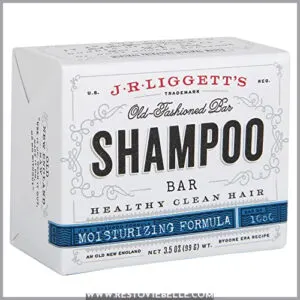
To ensure the safety of your colored hair, consider JRLIGGETT’S Shampoo Bar as a suitable option. This all-natural, handmade bar contains no harsh detergents or chemicals, just nourishing oils like coconut and aloe vera.
The mild sulfate-free formula cleanses hair while retaining color vibrancy, making it suitable for permed, colored, and curly locks.
- Nourishing oils moisturize hair
- Retains hair color
- Safe for sensitive skin
- May cause product build-up
- Can make hair hard to comb
- Mixed reviews on effectiveness
Challenges in Defining Color-Safe Shampoo Bars
As we dive deeper into the safety of shampoo bars for colored hair, it’s clear there are challenges around defining what “color-safe” truly means.
Brands seem to have varying interpretations, with some inexpensive options still containing sulfates while touting their color-safe properties.
Further muddying the waters is the subjective notion of “natural” – consumers perceive this term differently.
Ultimately buyers’ expectations play a pivotal role. Meeting them is key for sales and product formulation.
That brings us to a critical juncture – how can we clearly articulate what makes for a genuinely safe formula for colored tresses?
Assessing surfactants, henna reactions, and public misconceptions will pave the path to better understanding.
Concerns About Ingredients and Public Perception
When it comes to color-treated hair, there are concerns about the ingredients used in shampoo bars and how they may be perceived by the public.
Sodium Cocoyl Isethionate (SCI) is known for its adverse effects on henna-treated hair, while Cocoamidopropyl Betaine and Coco Glucoside have their own considerations when it comes to maintaining the integrity of colored hair.
Public perception plays a role in determining what ingredients are deemed safe or harmful, making education about ingredient safety crucial for dispelling myths and meeting consumer expectations.
Sodium Cocoyl Isethionate (SCI)
You’re finding that henna-treated hair reacts poorly to Sodium Cocoyl Isethionate (SCI), stripping color and causing damage.
Sodium Cocoyl Isethionate is a common surfactant found in shampoo bars, but it can be concerning for those with colored hair.
However, there are color-safe formulations available that don’t contain SCI.
Look for shampoo bars labeled as sulfate-free and specifically formulated for color-treated hair to ensure the safety of your vibrant locks.
Additionally, exploring alternative surfactants or using water softening techniques can help mitigate any potential issues with SCI in shampoo bars.
Cocoamidopropyl Betaine
If you’re concerned about the ingredients and public perception of shampoo bars, one ingredient to consider is cocoamidopropyl betaine.
This surfactant choices a milder alternative to harsher options, providing color protection through pH balance crucial for longevity of hair dye.
Careful selection of surfactant blends including options like cocoamidopropyl betaine allows for effective yet gentle sulfate-free cleansing of color treated hair using proper application techniques.
Coco Glucoside
Two other ingredients you’re concerned about are coco glucoside and its high pH, which can strip permanent dye and requires pH adjustments for color safety.
- Check product pH levels
- Seek milder surfactant options
- Adjust pH with citric acid
- Consult professional colorists
- Research ingredient compatibility
Henna-Treated Hair
Regarding henna-treated hair, you’re finding it reacts adversely to Sodium Cocoyl Isethionate (SCI) in shampoo bars.
Henna binds strongly with hair proteins, so harsh surfactants like SCI can strip color.
Seek sulfate-free bars with milder surfactants like SLSA or Capryl Glucoside instead.
Checking a shampoo’s pH level is crucial too – aim for under 5.5 to maintain henna color vibrancy.
Adjusting pH with citric acid helps retain your vibrant hues.
PH Adjustments for Henna-Treated Hair
Adjusting the pH of your shampoo is necessary for maintaining the integrity of henna-treated hair.
- Feeling empowered to care for your hair
- Understanding myths versus facts
- Seeing the beauty in diversity
- Appreciating the science behind formulations
- Believing in ingredient transparency
Seeking Alternatives and Ingredient Accessibility
When formulating color-safe shampoo bars, explore using the milder surfactant Sodium Lauroyl Methyl Isethionate (SLMI) as an alternative, although availability is limited.
You could also experiment with combining gentle surfactants like coco glucoside, coco betaine, and Sodium Cocoyl Isethionate (SCI) for a milder bar.
However, avoid cocamidopropyl betaine as an ingredient if aiming to create a formulation suitable for those with eczema.
Sodium Lauroyl Methyl Isethionate (SLMI)
You’ve suggested sodium lauroyl methyl isethionate (SLMI) as a milder alternative surfactant.
It’s not as readily available, making it tricky to experiment with in shampoo bar recipes.
Combining surfactants like coco glucoside, coco betaine, and SCI may create a milder shampoo bar.
But we’d avoid cocamidopropyl betaine given its potential to irritate those with eczema.
Combination of Surfactants
When choosing shampoo bars for color-treated hair, it’s important to consider the combination of surfactants used in their formulations.
Formulating bars with a blend of mild coco glucoside, coco betaine, and SCI surfactants can help balance effectiveness and gentleness.
Carefully crafted combinations aim to lift dirt while preserving color vibrancy through balanced pH levels.
Seeking clarification on all ingredients used allows consumers to make informed choices aligned with personal needs and values.
Avoiding Cocamidopropyl Betaine
You’d avoid cocamidopropyl betaine in shampoo bars because of its potential to irritate eczema sufferers’ skin. Seeking milder alternatives like sodium lauroyl methyl isethionate or combinations of gentler surfactants allows for effective cleansing without compromising hair color or scalp health.
Formulating shampoo bars to balance safety, efficacy and sustainability requires analyzing various surfactants for factors like skin compatibility and color protection based on consumer preferences.
Meeting buyers’ needs for wholesome, non-irritating ingredients in hair care drives the shift toward informed choices grounded in science over assumptions.
Usage Instructions for Shampoo Bars
When using shampoo bars on color-treated hair, start by:
- Wetting your hair thoroughly along with the bar.
- Working up a nice lather by gently massaging and rubbing the bar directly into your hair and scalp.
- Rinsing out the lather with warm water, avoiding hot water which can be damaging.
Wetting Hair and Shampoo Bar
You wet your hair and the shampoo bar before use to create the desired lather when washing. This allows the surfactants in the bar to interact with the water and makes application easier.
- Apply water thoroughly from roots to ends
- Ensure bar also soaked well
- Rub bar directly into hair for quick, rich lather
Lathering and Scrubbing Hair
Rub the bar directly onto your hair to achieve the desired lather, then thoroughly scrub your hair and scalp.
Use light, circular motions while gently massaging your scalp with the pads of your fingers to optimize lathering.
Adjust water temperature as needed for your hair type.
Ensure thorough contact between surfactants and strands by evenly distributing the lather from roots to tips before rinsing.
Rinsing With Warm Water
After thoroughly scrubbing your hair and scalp, rinse ’em out with warm (not hot) water.
Using water that’s too hot can damage hair and strip color, so aim for a comfortable warm temperature.
Rinsing thoroughly ensures no residue remains on strands or scalp. This removes all traces of surfactants while maintaining hair’s moisture balance and pH for continued scalp health.
Dealing With Hard Water and Softening Techniques
When using shampoo bars with hard water, try creating a fake soft water rinse with baking soda for better results.
Simply mix 1 teaspoon of baking soda into 1 cup of water and use it as a final rinse after shampooing.
You can also lather up with a shampoo bar before rinsing with hard water to protect your hair.
Additionally, use an apple cider vinegar wash after shampooing to eliminate any residue or scale deposits from the hard water.
- Create a fake soft water rinse with baking soda and water.
- Lather up with shampoo bar before using hard water.
- Use an ACV wash after shampooing for added benefits.
ACV wash recipe: Mix 1 tbsp ACV with 1 cup warm water.
The ACV rinse helps with combing, hydrates hair, and eliminates any vinegar smell once dry. Using these techniques can help deal with the adverse effects of hard water when using solid shampoo bars on color-treated hair.
Frequently Asked Questions (FAQs)
How often should I use a shampoo bar on color-treated hair?
You should use a shampoo bar 2-3 times per week on color-treated hair. This allows sufficient cleansing while avoiding over-washing, which can be drying.
Focus on gently massaging the scalp and hair when lathering.
Rinse thoroughly with cool water to seal in moisture and color.
Will a shampoo bar remove hair color?
Shampoo bars won’t directly remove hair color.
When used properly by following package directions and rinsing thoroughly, quality shampoo bars with mild surfactants can effectively cleanse color-treated hair without stripping dye.
Take care to select bars free of harsh sulfates.
Can I use a shampoo bar if I have highlights or balayage?
Yes, you can safely use a shampoo bar if you have highlights or balayage.
Carefully check the ingredients to ensure the formula is free of sulfates and harsh chemicals that may strip color.
Gently massage the bar directly onto your hair when washing to cleanse while retaining vivid tones.
Should I use a separate conditioner with a shampoo bar for color-treated hair?
Yes, use a separate conditioner.
Shampoo bars cleanse hair but may leave it drier than liquid shampoos. Conditioning after shampooing helps restore moisture, especially for color-treated hair.
Look for a silicone-free conditioner to avoid buildup.
Do shampoo bars cause more tangles in color-treated hair?
No, shampoo bars don’t inherently cause more tangles in color-treated hair.
Ensure you thoroughly rinse and use a wide-tooth comb post-shampoo to detangle.
Skipping conditioner may increase knots.
Conclusion
So, are shampoo bars safe for color-treated hair? Absolutely!
With the right ingredients and proper usage, shampoo bars can be a great choice for maintaining vibrant and healthy colored locks.
Brands like Kitsch, Odacité, Ethique, Davines, and JRLIGGETT’S offer excellent options specifically formulated for colored hair.
While there may be challenges in defining color-safe shampoo bars and concerns about certain ingredients, alternatives like SLMI and a combination of surfactants can address these issues.
Follow the usage instructions, and you’ll be on your way to enjoying the benefits of shampoo bars for color-treated hair.

